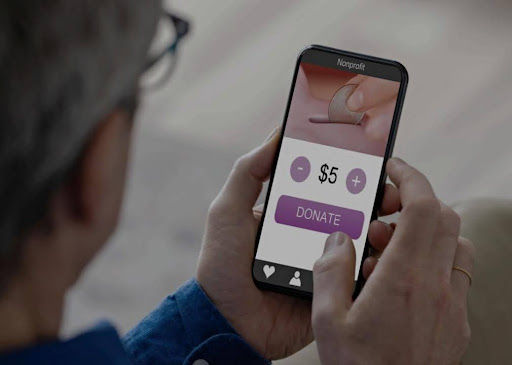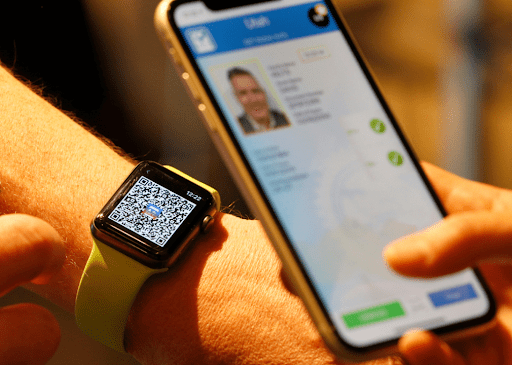Technological breakthroughs have made shopping as simple as tapping a device from home. While online shopping now accounts for a growing share of consumer spending—15.9% of all U.S. sales in the first quarter of 2025, up from 6.5% a decade earlier—physical stores remain relevant and continue to draw customers.
Why? In-person shopping offers unique advantages, including direct help from sales staff, the ability to see and try products, and no shipping delays or costs. Many brick-and-mortar retailers have also embraced technology to improve the experience, such as self-checkout, digital signage, and augmented or virtual reality tools that let shoppers try products before buying.
Uniqode analyzed news coverage and industry reports to explore how in-store shopping has evolved over the past 75 years. Malls and retail centers, long staples of American culture, still play an important role in local communities. Despite decades of disruption from big-box stores, credit cards, and barcodes, brick-and-mortar retailers have continued to adapt and shape shopping trends.
Read on to see how shopping has transformed alongside advances in technology.

The birth of the big-box store
So-called big-box stores shook businesses to their core, particularly local mom-and-pop shops. Major retailer chains, including Walmart, Target, and Kmart, opened their doors in 1962, drawing in consumers with their massive retail space, variety of products, and compelling discounts.
While department stores like Macy’s and Nordstrom are known for their personalized customer service, big-box megastores are all about convenience and self-service, allowing consumers to freely sift through the dense selection of merchandise available. These locations focused on suburban communities, particularly where families own cars.
According to the Department of Energy, big-box stores represent 82% of total revenue from retailers in the United States. Walmart alone reached up to $681 billion in revenue in 2024. Even with the format’s domination of the market, these big stores have changed through the years in response to new technologies and trends. They’ve expanded online stores and integrated features into their physical locations, such as ordering products online and picking them up at stores.

The rise of revolving credit and the consumer credit card
Today’s credit cards provide consumers convenience and ample opportunities to spend, but the concept borrowed heavily from department stores. In the mid-20th century, department stores offered shoppers “revolving” credit that allowed them to keep a balance with the shops from month to month, up to a specific limit.
Banks soon entered the credit business. Eventually, retailers with credit card programs also started to accept bank-issued credit cards, such as Visa and Mastercard, due to convenience for customers and the rise of better technology that could relay credit information more quickly and efficiently.
Credit cards have become an appealing way to make general-purpose purchases, especially since credit card companies offer rewards such as cash points and airline miles for spending.

The invention of the barcode
With a barcode on practically every purchasable product, shoppers may take those black-and-white lines for granted, but their introduction to markets was revolutionary. In 1949, Joseph Woodland and Bernard Silver submitted a patent for a design of lines representing numbers. It took until the 1970s for stores—beginning with those selling groceries—to regularly use barcodes, the basis of which is a standardized Universal Product Code and a rectangular design by IBM.
Thanks to barcodes, retailers can efficiently track inventory, pricing information, and other product information, leading to better supply chain management. The incorporation of barcodes made business easier and more cost-efficient, lowering consumer product costs as well.
Consumers also benefited from faster checkout at stores and grocery markets, especially once more locations introduced self-checkout lanes. Shoppers can also scan barcodes at stores with devices or, increasingly, with their own smartphones to learn more about a product.

The invention of e-commerce
The inception of e-commerce, buying and selling goods and services online, goes back decades to 1969 with the founding of CompuServe, which allowed businesses to interface. The first transaction on the internet wasn’t until 1994, however, through a website called NetMarket. From there, it wouldn’t take long for some recognizable companies to emerge and make a splash in the business world.
Online marketplaces, including Amazon and eBay, launched in the mid-1990s. Amazon started as an e-commerce platform for books, and eBay allowed online users to put up their items for auction. Amazon, in particular, grew massively, introducing a Prime membership for fast shipping and other benefits. It reached $637.95 billion in revenue in 2024.
Companies like PayPal were also founded and supported online money transfers as a convenience for online shoppers. Today, retailers recognize the Monday after Thanksgiving as Cyber Monday, promoting online shopping with deep discounts, just as they do with in-store deals on Black Friday.

Smartphones and QR Codes come into play
The QR Code’s history is closely tied to barcodes and goes back to 1994. But it wasn’t until the early 2010s, when most consumers had smartphones, that opportunities for retailers opened up. It started with third-party QR Code scanner apps, but in 2017, Apple released iOS 11, which offered a QR Code scanner via the camera. Earlier in the decade, in 2011, Alipay and WeChat Pay pioneered using QR Codes for digital payments, removing the need for a point-of-sale terminal.
Beyond payment, more retail stores began utilizing QR Codes for their loyalty programs, discount offers, and marketing opportunities. The COVID-19 pandemic further fueled their consumer-facing growth when more no-contact interactions were required.
The future of in-store shopping
Technological advances won’t slow down, and consequently, in-person retail stores will have to keep pace and adapt to the growing use of new tools. QR Code payments are already highly integrated into the retail experience in China and are projected to continue growing in popularity in the U.S. More stores may also start using QR Codes to prevent product counterfeiting. And in true futuristic fashion, some retailers even use QR Codes to enable AR or VR on-site shopping experiences.
Services like Apple Pay and contactless credit cards with RFID and NFC technology are also steadily replacing traditional card readers. Big-box retailers have tested different concepts, such as smaller stores. Even an e-commerce giant like Amazon has experimented with physical retail spaces, such as Amazon Go stores, which allow customers to walk out with items and automatically charge their accounts.
Several other developing technologies could shift the way retailers do business. Smart glasses could replace the smartphone’s scanning functionality and allow shoppers to identify brands, prices, and available quantities for their desired products. With advanced analytics, consumers may walk into a store and instantly get recommendations based on their previous purchases and behavior.
Artificial intelligence may also have a prominent role in advertising and personalized shopping, potentially using consumer data to suggest everything shoppers need without them even asking.
The future of in-store shopping is shaping up to be a blend of physical and digital.
Story editing by Carren Jao. Additional editing by Elisa Huang. Copy editing by Kristen Wegrzyn. Photo selection by Ania Antecka.

















